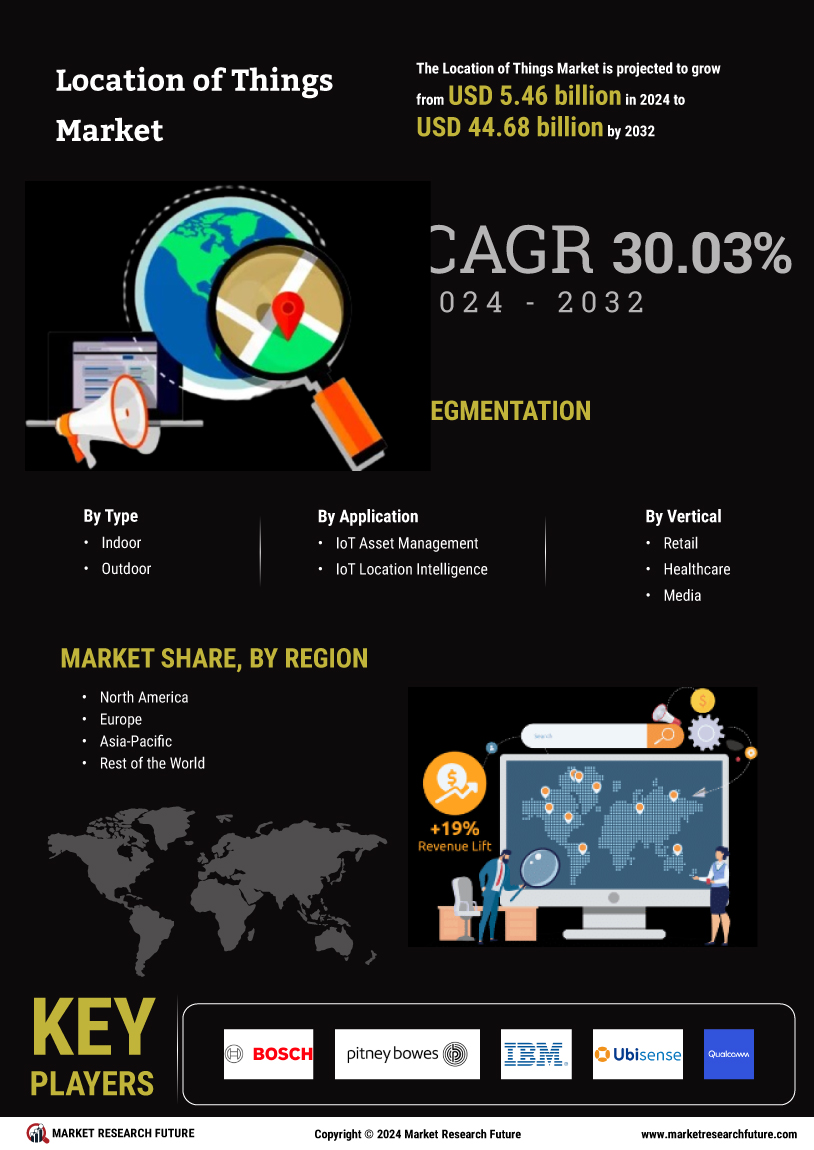Market Growth Projections
The Global Location of Things Market Industry is poised for substantial growth, with projections indicating a rise from 5.46 USD Billion in 2024 to 98.2 USD Billion by 2035. This growth reflects a remarkable CAGR of 30.05% from 2025 to 2035. The increasing integration of location-based technologies across various sectors, including transportation, logistics, and retail, is a key driver of this expansion. As organizations continue to recognize the value of location data in enhancing operational efficiency and customer experiences, the market is likely to witness significant advancements and innovations in the coming years.
Advancements in IoT Technology
Technological advancements in the Internet of Things (IoT) are propelling the Global Location of Things Market Industry forward. Enhanced connectivity and the proliferation of smart devices enable seamless integration of location-based services. For example, smart cities are increasingly adopting IoT solutions to manage urban infrastructure and improve public services. The integration of IoT with location data allows for better traffic management and resource allocation. As these technologies evolve, they are expected to drive significant growth in the market, aligning with the projected increase in market valuation from 5.46 USD Billion in 2024 to 98.2 USD Billion by 2035.
Rising Demand for Real-Time Data
The Global Location of Things Market Industry experiences an increasing demand for real-time data across various sectors, including logistics, transportation, and retail. Companies are leveraging location-based services to enhance operational efficiency and customer engagement. For instance, businesses utilize GPS and IoT technologies to track assets and optimize routes, leading to reduced operational costs. This trend is projected to contribute to the market's growth, with the industry valued at 5.46 USD Billion in 2024 and expected to reach 98.2 USD Billion by 2035, indicating a robust CAGR of 30.05% from 2025 to 2035.
Growing Adoption of Smart City Initiatives
The Global Location of Things Market Industry is significantly influenced by the growing adoption of smart city initiatives worldwide. Governments are investing in smart infrastructure to enhance urban living conditions and improve public safety. For instance, cities are implementing location-based services for efficient waste management and emergency response systems. This trend not only enhances the quality of life for residents but also drives economic growth. As smart city projects expand, the demand for location-based solutions is expected to rise, contributing to the market's anticipated growth from 5.46 USD Billion in 2024 to 98.2 USD Billion by 2035.
Increased Focus on Supply Chain Optimization
The Global Location of Things Market Industry is witnessing a heightened focus on supply chain optimization as businesses seek to enhance efficiency and reduce costs. Location-based technologies enable companies to track inventory in real-time, manage logistics, and improve delivery accuracy. For example, retailers are utilizing geolocation data to streamline their supply chains and enhance customer satisfaction. This trend is expected to drive significant growth in the market, with projections indicating an increase from 5.46 USD Billion in 2024 to 98.2 USD Billion by 2035, reflecting a CAGR of 30.05% from 2025 to 2035.
Emergence of Location-Based Marketing Strategies
The Global Location of Things Market Industry is also shaped by the emergence of location-based marketing strategies. Businesses are increasingly utilizing geolocation data to target consumers with personalized advertisements and promotions based on their location. This approach enhances customer engagement and drives sales. For instance, retailers can send tailored offers to customers when they are in proximity to their stores. As companies recognize the potential of location-based marketing, the demand for related technologies is expected to surge, contributing to the market's growth trajectory from 5.46 USD Billion in 2024 to 98.2 USD Billion by 2035.

















Leave a Comment